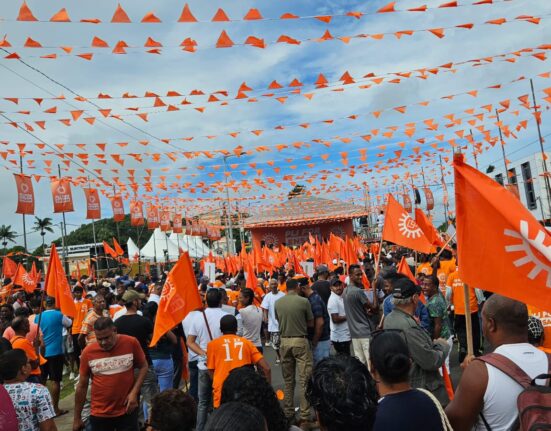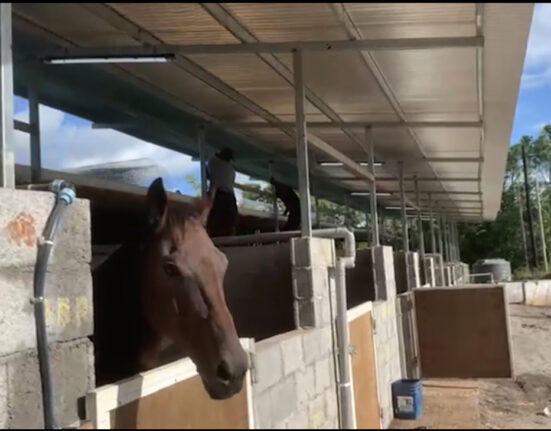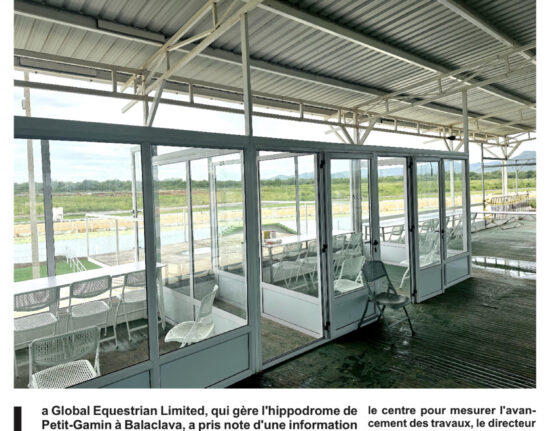Au fait, il semblerait que ce serait une famille de sept membres, des particules parasites d’un acide nucléique entouré de protéines qui ne peuvent se répliquer qu’à l’intérieur d’une cellule hôte. Les virus ne sont pas considérés comme des organismes vivants indépendants. La version anglaise de notre version française est
la suivante : corona virus (sub microscopic parasite) parasitic particle of a nucleic acid surrounded by protein that can only replicate within a host cell. Viruses are not considered to be independent living organisms.

Il nous revient que c’est en avril 2012 que pour la première fois, ce virus avait été identifié en Jordanie. Depuis cette date, il aurait fait son chemin, traversant le Moyen Orient jusqu’à touchant la république Coréenne. Notre enquête sur le net nous a permis de tomber sur des informations intéressantes que nous partageons avec nos lecteurs. Et, en parcourant le site Hayekmedical.com, nous avons été mis au parfum de l’existence d’un équipement qui pourrait être utilisé sur les patients avec des symptômes probables du coronavirus pour qu’ils puissent vaincre les dif-cultés éprouvés pour respirer. Car, il va sans dire que l’une des symptômes du coronavirus serait une respiration difficile qui pourrait entraîner la mort du patient. Nous produisons l’originalité de l’article en question tout en espérant que l’article en question serait d’une certaine aide, pour percer le secret de la fatalité des jumeaux du corona virus.
About MERS ou Coronavirus
Middle East Respiratory Syndrome (MERS) is an illness caused by a virus (more specifically, a coronavirus) called Middle East Respiratory Syndrome Corona-virus (MERS-CoV). Most MERS patients developed severe respiratory illness with symptoms of fever, cough and shortness of breath. About 3 or 4 out of every 10 patients reported with MERS have died.
All cases are linked to the Arabian Peninsula
Health official first reported the disease in Saudi Arabia in September 2012. Through retrospective (backward-looking) investigations, they later identified that the first known cases of MERS occurred in Jordan in April 2012. So far, all cases of MERS have been linked through travel to, or residence in, countries in and near the Arabian Peninsula. The largest known outbreak of MERS outside the Arabian Peninsula occurred in the Republic of Korea in 2015. The outbreak was associated with a traveler returning from the Arabian Peninsula.
People with MERS can spread it to others
MERS-CoV has spread from ill people to others through close contact, such as caring for or living with an infected person.MERS can affect anyone. MERS patients have ranged in age from younger than 1 to 99 years old.CDC continues to closely monitor the MERS situation globally. We are working with partners to better understand the risks of this virus, including the source, how it spreads, and how to prevent infections. CDC recognizes the potential for MERS-CoV to spread further and cause more cases globally and in the U.S. We have provided information for travelers and are working with health departments, hospitals,
How is Mers spread?
As a respiratory disease, MERS can be spread through droplets coughed into the air. If they are breathed in or land on a surface that someone else touches, that person can contract the disease. A sick person with virus on their hands can also spread it. Casual contact, such as passing someone on the street,…
Is Mers contagious?
Mers is contagious, but fortunately requires close contact to be spread, often meaning that healthcare workers treating Mers-infected patients are at high risk.
Biphasic Cuirass Ventilation provides a real answer to a real problem.
Understanding Biphasic Cuirass Ventilation (BCV)
Biphasic Cuirass Ventilation, or Hayek BCV as it’s better known, is a simple concept. Breathing consists of two phases: Inspiration and Expiration. During the inspiration phase the diaphragm moves downwards, while the rib muscles pull the ribs out expanding the chest. This expands the lungs and generates a lower pressure inside the chest cavity than outside. This decreases the pressure below normal atmospheric pressure, causing air to rush in through the nose and mouth and into the lungs. This is termed negative pressure breathing. When we breathe out the muscles relax, the diaphragm moves up and in, and this pushes air out of the lungs. Biphasic Cuirass Ventilation works in the same manner, sucking the diaphragm down and creating negative pressure in the chest – the Inspiratory Phase. However, what makes BCV so special is that active phase that uses positive pressure to push air back out of the lungs – the Expiratory Phase.With over 300 publications to date, BCV is a very well-proven method of ventilation
BCV Provides
Biphasic Cuirass Ventilation provides an efficienand efective method of non-invasive external ventilation and is a real alternative to traditional forms of ventilation.
BCV Works
As ventilation is biphasic, it is possible to achieve both higher tidal volumes (negative inspiratory tidal volume and positive expiratory tidal volume) and higher frequencies ranging from 6 to 1200 breaths per minute. All while allowing the user to have proper and complete control over I:E ratio, without having to depend on passive recoil of the patient. Biphasic Cuirass Venti-lation has been proven to reduce mortality rates, increase patient comfort, and avoid many of the harmful side-efects associated with other existing forms of ventilation techniques.
When can the BCV be used?
A better question is ‘When can’t I use BCV?’You can use BCV in virtually any circums-tance where you would use any other form of non-invasive ventilation and, come to think of it, even in most cases where you would use invasive ventilation.
How BCV Works
The Nitty Gritty – Simple Application Biphasic Cuirass Ventilation works using a clear plastic shell called a Cuirass. The Cuirass is lightweight and has a foam seal that maintains an airtight fit around the patient. It is very comfortable to wear. It is available in 11 different sizes, ranging from babies to adults. The Cuirass is placed on the patient, and connected to a United Hayek power unit, such as the Hayek RTX or Hayek HRTX.
Broad Applications
Biphasic Cuirass Ventilation can be used both in the hospital setting and at home. BCV is ideally suited for use in acute and chronic, intubated or non-intubated patients.
Comfort Factor
Biphasic Cuirass Ventilation doesn’t just ventilate fantastically, it’s really, really comfortable too. The seal is made of super soft foam, the Cuirass is very, very light and it’s designed to fitlike a glove. And, because United Hayek power units automatically compensate for leaks, the Cuirass doesn’t need to be applied tightly.
Clean & Hygenic
Did we mention the seal is hypoallergenic, and it’s disposable too? That means it’s hygenic, which helps to avoid infection, and, of course, it’s latex-free.
Superb Technology
United Hayek power units are really advanced. Devices like the Hayek RTX are crammed with the latest technology. It incorporates many modes of ventilation, as well as a dedicated physio mode, which not only helps loosen secretions, it helps eliminate them with its built-in cough mode. Any other ventilators you know of do that?! Application of BC You can use Biphasic Cuirass Ventilation with virtually any patient that would otherwise be on either a facemask and, (in most cases) instead of a tracheostomy, as well as a method of weaning from invasive positive pressure ventilation (IPPV).
Biphasic Cuirass Ventilation provides a real answer to a real problem.
Recent high profile incidents have raised awareness of the acute problem of treating and dealing with mass casualty situations. One particular issue of great concern is the lack of an adequate way to deal with large groups of people requiring ventilation quickly and effectively. Increased numbers of people gathering at shopping centres, stadia, public transportation facilities, high rise buildings and office blocks have increased the likelihood of mass casualty situations during accidents in these places. Increased traffion the road, air, sea and rail has added to the realistic dangers faced by large groups of the public when travelling.
- No need for skilled medical staff
- Effective ventilation without intubation
- Simplicity of use even when cumbersome protective gear is worn
- Portable – from the field to the medical centre with no need for additional equipment
Sen. Krishna Goojha
Sources: Hayekmedical.com and Centres for Diseases Control and Prevention










